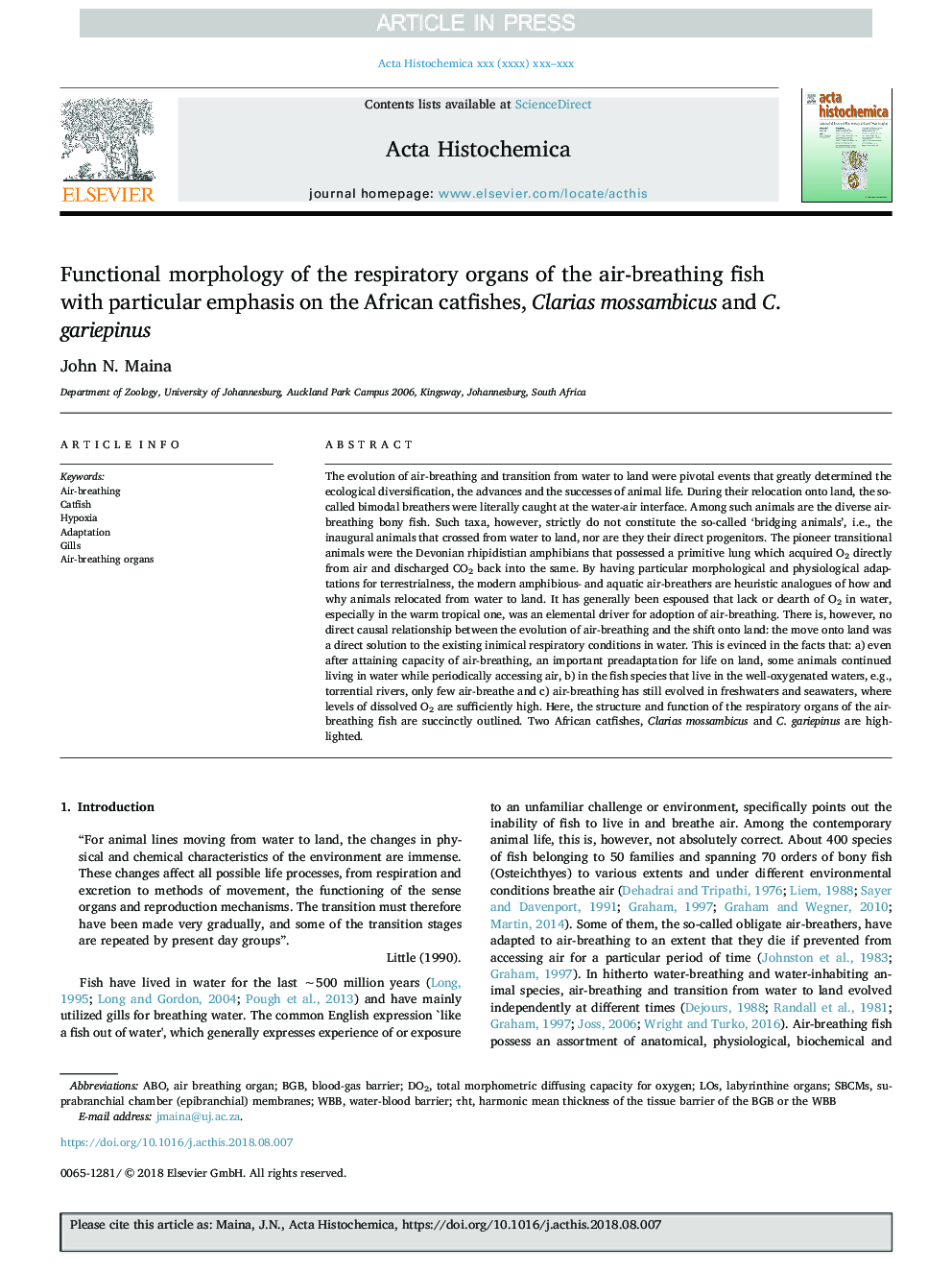| کد مقاله | کد نشریه | سال انتشار | مقاله انگلیسی | نسخه تمام متن |
|---|---|---|---|---|
| 11007707 | 1840514 | 2018 | 10 صفحه PDF | دانلود رایگان |
عنوان انگلیسی مقاله ISI
Functional morphology of the respiratory organs of the air-breathing fish with particular emphasis on the African catfishes, Clarias mossambicus and C. gariepinus
دانلود مقاله + سفارش ترجمه
دانلود مقاله ISI انگلیسی
رایگان برای ایرانیان
کلمات کلیدی
موضوعات مرتبط
علوم زیستی و بیوفناوری
بیوشیمی، ژنتیک و زیست شناسی مولکولی
زیست شیمی
پیش نمایش صفحه اول مقاله

چکیده انگلیسی
The evolution of air-breathing and transition from water to land were pivotal events that greatly determined the ecological diversification, the advances and the successes of animal life. During their relocation onto land, the so-called bimodal breathers were literally caught at the water-air interface. Among such animals are the diverse air-breathing bony fish. Such taxa, however, strictly do not constitute the so-called 'bridging animals', i.e., the inaugural animals that crossed from water to land, nor are they their direct progenitors. The pioneer transitional animals were the Devonian rhipidistian amphibians that possessed a primitive lung which acquired O2 directly from air and discharged CO2 back into the same. By having particular morphological and physiological adaptations for terrestrialness, the modern amphibious- and aquatic air-breathers are heuristic analogues of how and why animals relocated from water to land. It has generally been espoused that lack or dearth of O2 in water, especially in the warm tropical one, was an elemental driver for adoption of air-breathing. There is, however, no direct causal relationship between the evolution of air-breathing and the shift onto land: the move onto land was a direct solution to the existing inimical respiratory conditions in water. This is evinced in the facts that: a) even after attaining capacity of air-breathing, an important preadaptation for life on land, some animals continued living in water while periodically accessing air, b) in the fish species that live in the well-oxygenated waters, e.g., torrential rivers, only few air-breathe and c) air-breathing has still evolved in freshwaters and seawaters, where levels of dissolved O2 are sufficiently high. Here, the structure and function of the respiratory organs of the air-breathing fish are succinctly outlined. Two African catfishes, Clarias mossambicus and C. gariepinus are highlighted.
ناشر
Database: Elsevier - ScienceDirect (ساینس دایرکت)
Journal: Acta Histochemica - Volume 120, Issue 7, October 2018, Pages 613-622
Journal: Acta Histochemica - Volume 120, Issue 7, October 2018, Pages 613-622
نویسندگان
John N. Maina,